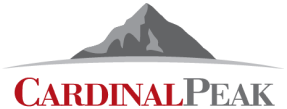

Founded in 2002, Cardinal Peak is a product engineering services company that helps bring products to market. With more than 800 projects resulting in 200-plus commercialized products, they are a trusted leader in the product engineering space doing everything from electrical engineering and embedded systems to mobile and cloud development. The company works on a wide breadth of projects and has over 100 engineers, of which approximately 20 are involved in testing. Cardinal Peak has always made it their priority to apply quality assurance at every step in the development process and ensure that their products and releases are always on time and on budget.
Because they work with vastly different clients, projects, and different systems under test, Cardinal Peak’s biggest software testing challenges come down to time and flexibility.
On top of every customer and product being different, being a services company means that the level of expected communication and customer direction also varies greatly. Testing a consumer electronic device is very different from testing a cloud application. That means that the engineering team at Cardinal Peak needs to be able to build test plans quickly and in alignment with what they are trying to accomplish for their customers.
Moreover, they need to be absolutely confident that their products are ready for manufacturing, production, or release. As Pablo Maurin, Director of QA Engineering at Cardinal Peak, put it, “If I have a project that is only going to be nine months long, I need to build a test plan and test cases quickly, I need to have testers assigned to the project, I need to have a reporting mechanism that I can share with a customer and I need to do it fast.”
The nature of Cardinal Peak’s business and the lean approach they take requires them to have the flexibility to quickly scope out what is needed, make the decisions on what type of testing will be done, and make it very clear who is going to do what. Pablo explained,
“Sometimes, even though we have a well known target at the end, some of it is exploratory in nature from both the software development standpoint and for the testing of the application as a result. We have to be able to understand that projects, technologies, and implementations change and we have to be flexible and adjust the plan accordingly as we test.”
In the past, Cardinal Peak’s testing teams tried Zephyr for Jira, a popular test case management add-on for their Jira projects. However, they quickly ran into limitations around the lack of flexibility, customization, and specificity when dealing with test case management. According to Pablo,
“The biggest problem with Zephyr for Jira is that it forces you to treat a test in the same way that you consider all the tasks and/or issues you have in Jira, and test cases and plans don’t work that way. You’re trying to fit a round peg in a square hole.”

Pablo Maurin
Director of QA Engineering

TestRail’s ease of use, customizability, and ability to visualize and organize tests into test runs makes it easy for Cardinal Peak to quickly spin up runs and track progress. Pablo stated, “TestRail is a simple enough tool that it doesn’t have a high burden for training and makes it very easy for us to spin up a new product quickly.”
The usability factor is also bolstered by streamlined workflows that allow Cardinal Peak’s testing team to seamlessly plan, execute, and report on manual testing right alongside the tests that they have automated.
Like many teams, Cardinal Peak’s QA team automates as much as they can, but there is always some element of testing that needs to be done by humans. TestRail’s test management workflows and user interface allow Pablo’s team to quickly identify what needs to be tested, update test status as they carry out the tests, and report results of testing (such as images, screen recordings, or log files).
Finally, TestRail provides Cardinal Peak with seamless integrations with their bug tracking tools. Pablo stated, “TestRail integrates well with our bug-tracking system so that we can report issues back to developers or have traceability back to the system’s requirements, linking tests back to found bugs.” This integration has allowed Cardinal Peak to track the version of the software that was executed and assign sets of tests to all the various testers on their team so that they can execute tests in parallel and improve workflow.

Pablo Maurin
Director of QA Engineering


Pablo Maurin
Director of QA Engineering
